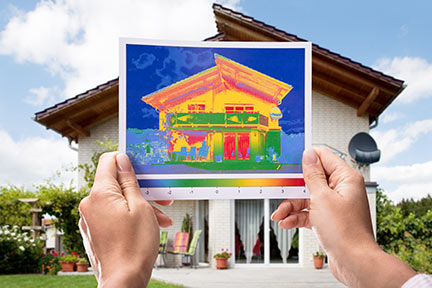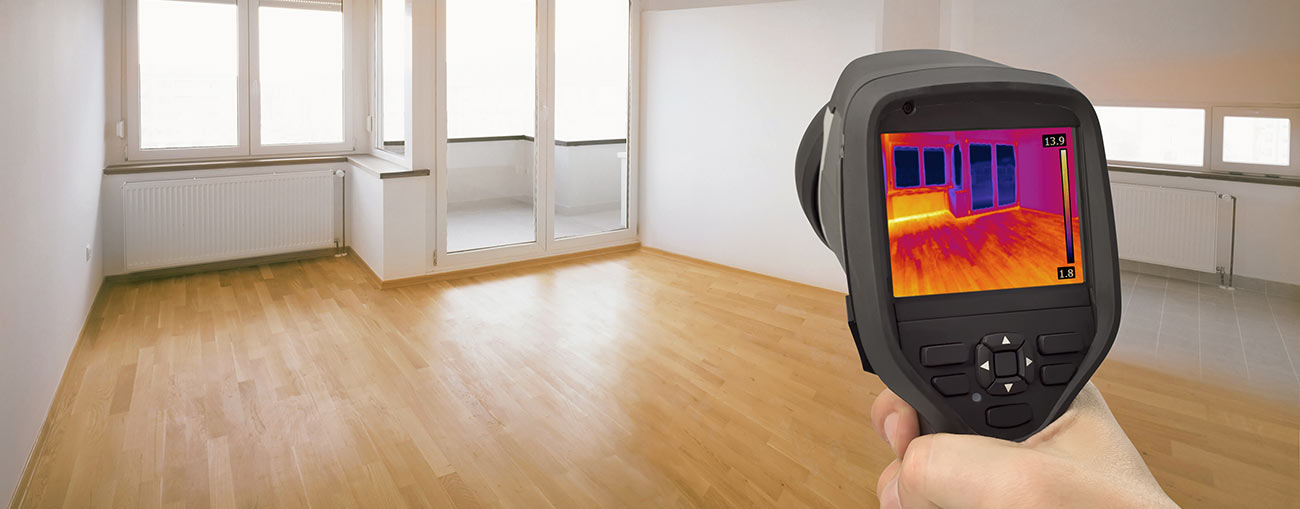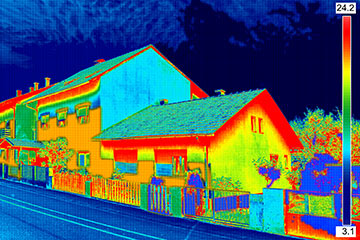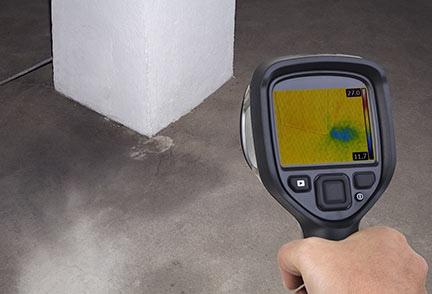Infrared Cameras and Thermal Imaging
Infrared (thermal imaging) is an advanced, non-invasive technology that allows the inspector to show homeowners things about their homes that can’t be revealed using conventional inspection methods. It is an invaluable tool in giving a more in-depth inspection and report. Which is why thermal imaging is always included in home inspections performed by Morrison Inspection Company.
The art of an infrared inspection is for the inspector to interpret the results as accurately and reasonably as possible such that you are given actionable information in order to proceed with necessary repairs. It’s important your inspector include not only the basics of the inspection in the report, but also interpretation of the results, which can help you determine what to do next in order to address any problems.

BENEFITS OF THERMAL IMAGING

An infrared inspection can identify and document moisture intrusion, energy loss, and even unexpected hot spots. An infrared camera can detect:
MOISTURE INTRUSION
- Plumbing leaks
- Hidden roof leaks before they cause serious damage
- Missing, damaged and/or wet insulation
- Excessive moisture in building materials
- Water and moisture intrusion around penetrations and at the foundation and building envelope that could lead to structural damage and mold
ENERGY LOSS
- Heat loss and air infiltration in walls, ceilings, floors, windows and doors
- Damaged and/or malfunctioning radiant heating systems
- Air-conditioner compressor leaks
- Under-fastening and/or missing framing members, and other structural defects that can lead to energy loss
- broken seals in double-paned windows.
HOT SPOTS
- Circuit breakers in need of immediate replacement
- Overloaded and undersized circuits
- Overheated electrical equipment and components
- Electrical faults before they cause a fire
Additionally, based on the color gradients that thermal images provide, an inspector can often locate:
- Possible pest infestation, as revealed by energy loss through shelter tubes left by boring wood-destroying insects
- The presence of intruders, such as rats, mice and other larger pests hiding within the structure and detected because of their heat signature that the infrared camera captures
- Dangerous flue leaks, which can lead to carbon monoxide poisoning of the home’s residents

HOW DOES AN INFRARED CAMERA WORK?
An infrared camera, or thermal imaging camera, is a form of “non-contact temperature measurement”. Normal cameras, which are a form of visual imaging, use the visible wavelengths of light to create an image of what we see when we look at an object.
Infrared or thermographic cameras, on the other hand, use longer wavelengths of light to record an image that shows what temperature an object is. The infrared camera is not a thermometer, and does not directly measure temperature, but the infrared energy that it does detect provides information about the temperatures of the item. The range of colors in an infrared image show a range of temperatures: this shows the “thermal pattern” of an object or area and provides helpful data about the temperatures ranges present in that area. Typically, blue colors represent colder areas, and red, yellow and white colors representing progressively hotter areas.

